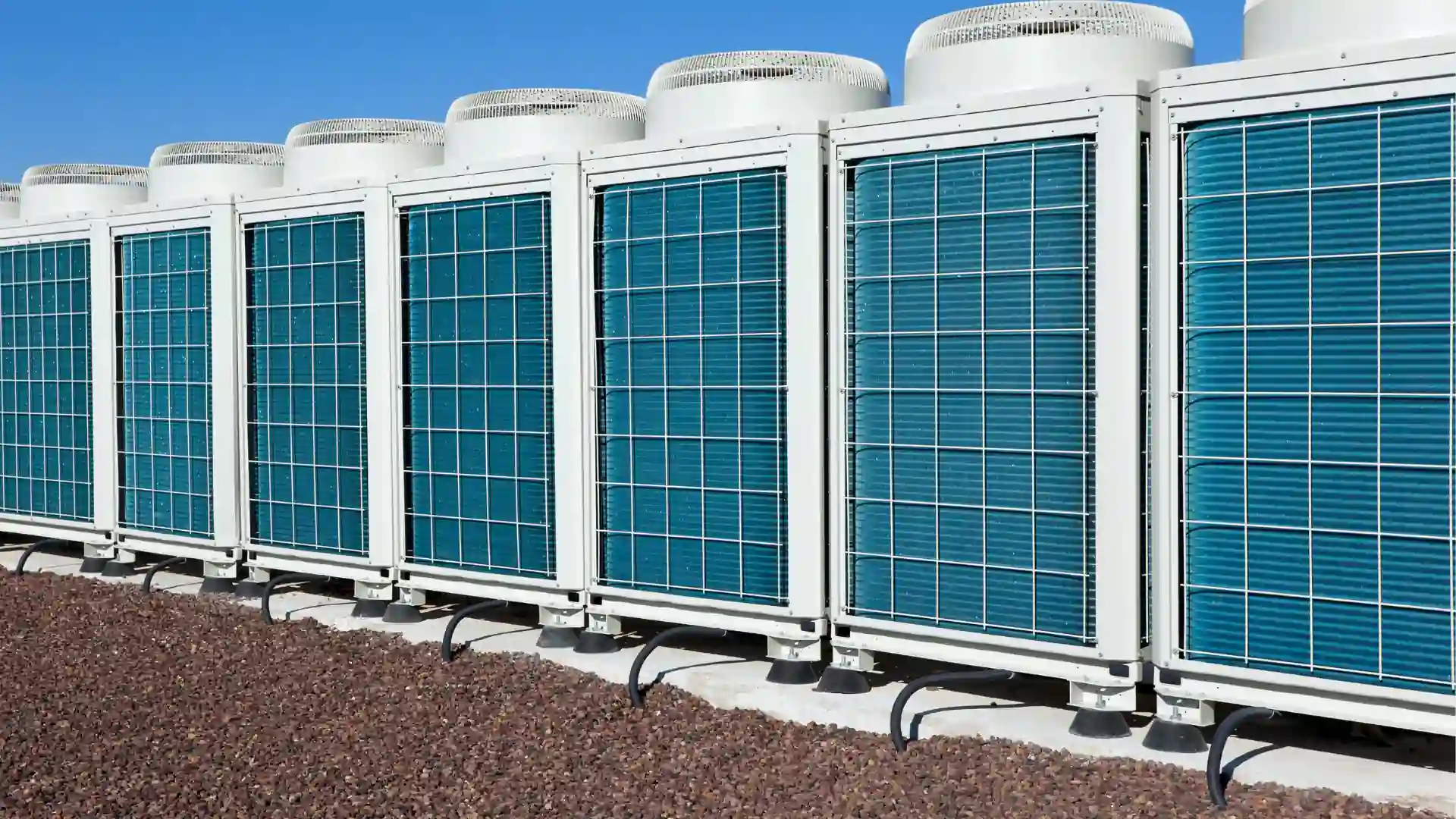HVAC/R Management Software Buying Guide

What is HVAC/R Management Software—and Why Does It Matter More Than Ever in 2025?
There’s no such thing as “just fixing the AC” anymore.
Today’s HVAC and refrigeration systems are at the center of some of the biggest challenges in facilities management: rising refrigerant costs, tightening environmental regulations, mounting labor shortages, and aging infrastructure. What used to be a behind-the-scenes utility is now a frontline business risk—and a major opportunity.
In 2025, reactive HVAC/R management is a liability. Facilities leaders must be able to identify refrigerant leaks before they cause a shutdown, stay ahead of regulatory changes like the AIM Act and CARB R3, and stretch thin maintenance teams across expanding portfolios. Trying to manage all of that with spreadsheets, siloed systems, or outdated CMMS platforms simply doesn’t cut it anymore.
That’s where purpose-built HVAC/R management software comes in.
Modern, integrated platforms give facilities teams the tools to:
- Reduce refrigerant waste and energy overuse by identifying and addressing leaks early
- Stay audit-ready and compliant with complex state and federal environmental regulations
- Streamline communication and service workflows across internal teams and third-party vendors
- Capture and connect critical asset data to inform smarter decisions and extend equipment life
The shift from reactive to proactive HVAC/R management is no longer a nice-to-have—it’s mission-critical. And without the right technology in place, even well-intentioned teams risk falling behind.
What Key Features Should HVAC/R Software Include for Compliance, Cost Control, and Efficiency?
Not all HVAC/R software is created equal—and in today’s high-stakes operating environment, settling for basic functionality simply isn’t an option. Modern facilities teams need a system that not only tracks refrigerant use, but actively helps prevent costly breakdowns, streamline compliance workflows, and drive down operational spend.
Here are the must-have features that top-performing HVAC/R management software should deliver:
Leak Tracking & Detection
Leaks don’t just waste refrigerant—they drive up energy bills, shorten equipment lifespans, and increase your carbon footprint. Leading software platforms continuously monitor leak rates across assets and locations, flagging anomalies in real time. This allows facilities teams to detect and resolve issues early—before they escalate into expensive emergencies or compliance violations.
Refrigerant Logs & Inventory Management
Accurate refrigerant tracking is the foundation of environmental compliance. Your software should maintain detailed logs of refrigerant usage, charge sizes, and recovery volumes across your entire asset inventory. With built-in tools to track usage by location and system, you’ll be able to meet EPA and CARB thresholds and maintain airtight documentation for audits.
Automated Alerts & Notifications
Whether it's a scheduled inspection, an exceeded leak threshold, or a looming deadline for compliance reporting, your team shouldn’t have to track it manually. Smart software delivers automated alerts to the right people at the right time—reducing human error, ensuring timely maintenance, and keeping every stakeholder in the loop.
Audit-Ready Reporting Tools
When regulations tighten, your reporting needs to be fast, accurate, and defensible. High-quality HVAC/R management software includes one-click reporting capabilities that align with EPA, AIM Act, and CARB R3 standards. These tools take the headache out of data gathering and help you avoid costly penalties by ensuring all documentation is readily available and up to date.
CMMS Integration for End-to-End Visibility
Refrigerant tracking doesn’t exist in a vacuum—it’s just one piece of your broader facilities management puzzle. That’s why seamless integration with your CMMS is essential. When your refrigerant data connects directly with your work orders, asset records, and service history, your team gains a full picture of what’s happening, what needs attention, and how to act on it efficiently.
How Do Regulations Like the AIM Act and CARB R3 Impact Your Software Needs?
The regulatory environment for HVAC/R systems is evolving fast—and falling behind can come with a steep price.
The American Innovation and Manufacturing (AIM) Act’s Emissions Reduction & Reclamation (ER&R) provisions, set to take effect in January 2026, represent one of the most sweeping refrigerant compliance mandates in decades. These rules expand federal oversight of hydrofluorocarbon (HFC) refrigerants and impose strict requirements for leak detection, repair verification, reporting, and reclamation.
Meanwhile, states like California are already ahead of the curve. The CARB R3 regulation sets a 0% allowable leak rate for certain systems, effectively mandating airtight refrigerant containment and forcing operators to rethink how they monitor and manage HVAC/R assets. Fines for noncompliance can reach $60,000 per day, creating serious financial exposure for companies that don’t have airtight tracking and reporting systems in place.
So, what does this mean for your software?
To meet today’s regulatory demands—and stay ahead of tomorrow’s—you need a platform that can do more than just store data. Your HVAC/R management software must actively support compliance at every step, helping you:
- Track leak rates, refrigerant usage, and GWP values by asset type, system size, and location
- Flag violations or exceeded thresholds automatically before they become reportable offenses
- Maintain detailed service logs and repair histories to meet audit and inspection requirements
- Document and verify corrective actions like follow-up inspections and leak repairs, in accordance with 40 CFR Part 82 and state-level laws
- Generate EPA- and CARB-compliant reports with the click of a button, dramatically reducing administrative effort
Integrated platforms like Trakref, built directly into Fexa, make it easier for teams to stay compliant by embedding these requirements directly into daily workflows. You don’t need to worry about remembering which state requires what form or which unit is due for inspection—because the system keeps track of it all for you.
This kind of built-in compliance support doesn’t just reduce regulatory risk. It saves your team time, improves accuracy, and ensures that environmental responsibility becomes a seamless part of how you manage your facilities.
In a world where Scope 1 emissions, refrigerant reclamation, and ESG reporting are moving targets, having software that evolves with the rules isn’t a luxury—it’s a must.
What’s the Difference Between a General CMMS and One With Built-In Refrigerant Management?
Most facility management platforms were not built with HVAC/R compliance in mind. While they may handle preventive maintenance and asset tracking adequately, they often fall short when it comes to managing the complexities of refrigerant use, leak monitoring, and environmental reporting. As regulations evolve, this limitation becomes increasingly problematic.
Facilities teams relying on general CMMS tools often need to supplement them with:
- Manual refrigerant logs maintained outside the system
- Separate databases for leak rate calculations
- Disconnected reporting processes for compliance documentation
This fragmented approach creates inefficiencies, increases the risk of reporting errors, and makes it harder to maintain audit-ready records.
By contrast, a CMMS with built-in refrigerant management provides a more integrated and accurate way to track and manage HVAC/R assets. Key capabilities include:
Integrated Refrigerant Tracking
Rather than using external tools or spreadsheets, refrigerant usage and leak data are managed directly within the same platform that tracks work orders and asset performance. This allows for consistent data capture and centralized oversight.
Unified Asset Visibility
HVAC/R data—including service history, refrigerant charge size, and leak rate trends—is accessible within a single system, reducing the need to consult multiple sources or reconcile inconsistent records.
Embedded Compliance Workflows
Systems designed with refrigerant management in mind often include structured workflows aligned to key regulatory requirements such as the AIM Act and CARB R3. This helps ensure that inspections, repairs, and documentation are handled in a consistent, policy-driven manner.
Automatic Synchronization Between Data Sets
Refrigerant records and maintenance activities are linked automatically, providing a more complete and accurate picture of asset status. This reduces administrative overhead and simplifies reporting.
For organizations managing HVAC/R systems across multiple locations, these differences are not minor. They directly affect a team’s ability to stay compliant, control costs, and manage assets efficiently. Choosing software that treats refrigerant management as a core function—not an add-on—can make a meaningful difference in operational outcomes.
How Can Software Reduce HVAC/R Costs—From Refrigerant Waste to Labor Inefficiencies?
The cost of a refrigerant leak adds up fast. According to Trakref’s research, even a 20% leak in HVAC/R systems represent a significant share of facilities spend—not just through upfront installation costs, but through the hidden, ongoing expenses of leaks, energy waste, and labor inefficiencies. Without effective monitoring, these costs compound quietly over time, often going unnoticed until major breakdowns or compliance failures occur.
To put it more simply: Even a 20% leak rate across six small systems can result in more than $10,000 in annual losses. These costs stem from multiple sources:
- Increased energy usage as systems run longer and harder to compensate for reduced cooling capacity
- Accelerated equipment degradation, reducing the useful life of assets and requiring premature replacements
- Elevated maintenance and labor expenses due to unplanned service calls and more frequent repairs
- Fines and penalties for failing to meet refrigerant leak thresholds under federal and state regulations
Software plays a critical role in containing these costs by replacing reactive maintenance practices with a more proactive, data-informed approach. Specifically, advanced HVAC/R management software can help teams:
Automate Leak Detection
Continuous monitoring of refrigerant levels and leak rates makes it possible to catch small problems before they grow into major failures. Alerts and thresholds ensure that issues are flagged early and tracked through resolution, reducing costly system downtime and energy waste.
Improve Preventive Maintenance Scheduling
With centralized asset data and automated reminders, teams can shift from sporadic or delayed service calls to a structured maintenance cadence. This not only extends asset life but also reduces the frequency and severity of emergency repairs.
Streamline Labor Allocation
Work orders tied directly to asset condition and compliance needs help prioritize tasks more effectively. By eliminating unnecessary visits and duplicate assignments, software can reduce labor hours and ensure technicians are focused where they’re most needed.
Avoid Redundant Work Orders and Unnecessary Service Calls
Automation rules and asset history checks can flag when work has already been performed—or when a recurring issue requires deeper investigation. This cuts down on repeated dispatches and improves first-time fix rates
Over time, these process improvements add up. In many cases, organizations implementing HVAC/R software alongside a modern CMMS report double-digit reductions in maintenance costs, fewer unplanned repairs, and higher asset uptime—often achieving ROI within the first year of adoption.
In short, controlling HVAC/R costs starts with visibility. Software provides the data, structure, and automation needed to shift from reactive spending to strategic investment in long-term system performance.
Does the Platform Offer Real-Time Insights to Help You Make Smarter Maintenance Decisions?
Timely decision-making in facilities management is only as good as the data behind it. HVAC/R systems operate in dynamic environments, and delays in identifying issues—whether mechanical, environmental, or regulatory—can translate into significant costs. That’s why real-time visibility is no longer a luxury. It’s a core requirement.
Modern HVAC/R management software should deliver live insights into:
- Asset performance metrics to highlight underperforming systems
- Leak rate fluctuations to detect environmental and cost risks early
- Maintenance histories to inform repair-vs-replace decisions
- Work order statuses and technician activity to keep projects on track
Having this level of insight available instantly—not buried in reports or siloed in spreadsheets—empowers teams to act quickly and strategically. Whether you're reallocating resources, identifying high-cost assets, or responding to a potential compliance event, real-time access to operational data allows for faster, more informed decisions.
Platforms like Fexa + Trakref support this visibility through customizable dashboards, mobile access in the field, and continuous synchronization across departments. The result is a more responsive maintenance operation—one where risks are mitigated early, priorities are better aligned, and decision-making is driven by data, not guesswork.
How Easily Can Your HVAC/R Data Connect With Your CMMS and Reporting Tools?
Disconnected data is one of the biggest obstacles to operational efficiency and regulatory compliance. When refrigerant logs, service histories, and asset data are stored in separate systems—or worse, managed manually—teams waste time reconciling records and risk missing critical compliance details.
An effective HVAC/R management solution must integrate seamlessly with your existing CMMS and reporting tools. Look for capabilities such as:
- Bi-directional API integrations that allow data to flow between systems without manual entry
- Shared architecture that aligns refrigerant tracking with asset and work order records
- Automated reporting tools that pull from a unified data source for consistency and accuracy
This kind of integration ensures that refrigerant usage, maintenance activity, and compliance requirements are not tracked in isolation. Instead, they become part of a connected operational ecosystem. Teams can generate accurate reports for the EPA or CARB, monitor key performance indicators, and inform capital planning—all using a single source of truth.
The Fexa + Trakref integration exemplifies this approach, eliminating data silos and providing full interoperability across systems. When HVAC/R data is accessible, reliable, and connected, your team gains the agility to manage assets more effectively and remain audit-ready at all times.
What Questions Should You Ask Vendors During Your HVAC/R Software Evaluation?
Choosing the right HVAC/R management software requires more than reviewing feature lists—it demands a clear understanding of whether the platform aligns with your operational needs, compliance responsibilities, and long-term goals. A thoughtful evaluation process can prevent costly missteps and ensure your investment supports both immediate and future requirements.
Here are key questions to ask during your evaluation:
- Regulatory Support: Does the platform include built-in workflows for regulatory frameworks like the AIM Act and CARB R3?
- Tracking Capabilities: Can it monitor leak rates, refrigerant usage, service history, and compliance status at the asset level?
- Real-Time Alerts: Does it support automated alerts for inspection deadlines, leak thresholds, or overdue repairs?
- Integration: How does it integrate with your existing CMMS or ERP system? Is the integration native, or does it require middleware or custom development?
- Transparency: Are all vendor fees, licensing costs, and user limitations disclosed up front?
- Support and Onboarding: What onboarding support is offered? Will your team have access to ongoing training, technical assistance, and success resources?
These questions can help you distinguish between a vendor that offers a transactional tool and one that delivers a scalable, long-term solution. Focus on providers that demonstrate a clear understanding of HVAC/R compliance and facilities management—and who can show you how their system will support your team's specific workflows.
Why Are Modern HVAC/R Leaders Choosing Integrated Platforms Like Fexa + Trakref?
Today’s facilities leaders face mounting pressure to reduce emissions, maintain uptime, meet regulatory demands, and control costs—all while managing increasingly complex asset portfolios. In this environment, siloed systems and partial solutions fall short.
That’s why more organizations are turning to integrated platforms that bring HVAC/R management, refrigerant compliance, and maintenance operations together in one place. These platforms simplify complex workflows, eliminate redundant tasks, and ensure that critical information is available to every stakeholder—from field technicians to compliance officers.
With an integrated platform like Fexa + Trakref, HVAC/R leaders gain:
- A unified view of refrigerant, maintenance, and asset data, enabling more strategic decision-making across teams
- Regulatory alignment with built-in support for AIM Act, CARB R3, and EPA requirements, ensuring audit-readiness and reduced risk
- Greater efficiency through streamlined work order management, leak detection, and reporting workflows
- Improved visibility into system performance, leak trends, and cost drivers, allowing for smarter investment in maintenance and capital planning
This integrated approach doesn’t just reduce friction between systems—it aligns operations with broader organizational goals like sustainability, compliance, and cost control. For many, the shift to integrated platforms reflects a broader transition from reactive maintenance to proactive, data-informed facilities management. And that shift is becoming essential for long-term success.
Ready to see how it works?
Let’s make your HVAC/R operations smarter, more sustainable, and fully compliant.


